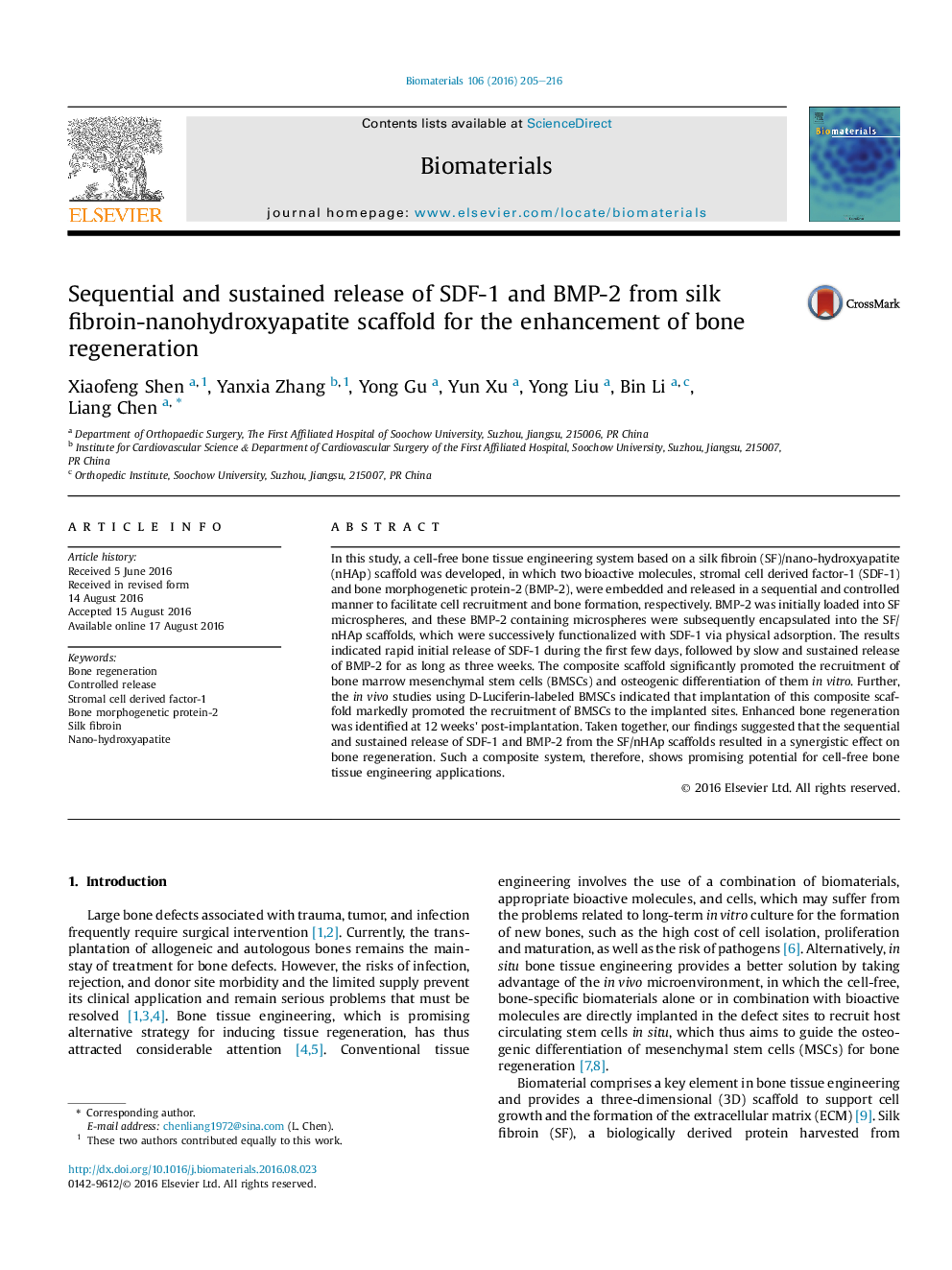| Article ID | Journal | Published Year | Pages | File Type |
|---|---|---|---|---|
| 6451071 | Biomaterials | 2016 | 12 Pages |
In this study, a cell-free bone tissue engineering system based on a silk fibroin (SF)/nano-hydroxyapatite (nHAp) scaffold was developed, in which two bioactive molecules, stromal cell derived factor-1 (SDF-1) and bone morphogenetic protein-2 (BMP-2), were embedded and released in a sequential and controlled manner to facilitate cell recruitment and bone formation, respectively. BMP-2 was initially loaded into SF microspheres, and these BMP-2 containing microspheres were subsequently encapsulated into the SF/nHAp scaffolds, which were successively functionalized with SDF-1 via physical adsorption. The results indicated rapid initial release of SDF-1 during the first few days, followed by slow and sustained release of BMP-2 for as long as three weeks. The composite scaffold significantly promoted the recruitment of bone marrow mesenchymal stem cells (BMSCs) and osteogenic differentiation of them in vitro. Further, the in vivo studies using D-Luciferin-labeled BMSCs indicated that implantation of this composite scaffold markedly promoted the recruitment of BMSCs to the implanted sites. Enhanced bone regeneration was identified at 12 weeks' post-implantation. Taken together, our findings suggested that the sequential and sustained release of SDF-1 and BMP-2 from the SF/nHAp scaffolds resulted in a synergistic effect on bone regeneration. Such a composite system, therefore, shows promising potential for cell-free bone tissue engineering applications.
Graphical abstractDownload high-res image (298KB)Download full-size image
